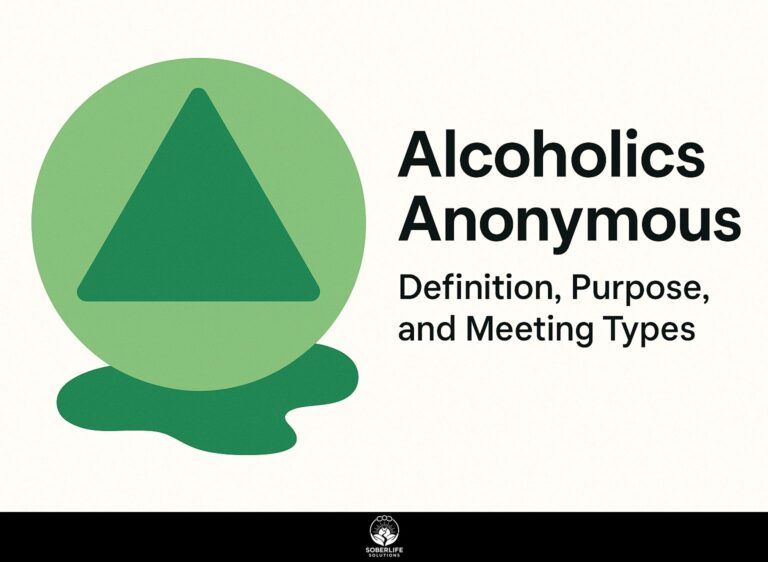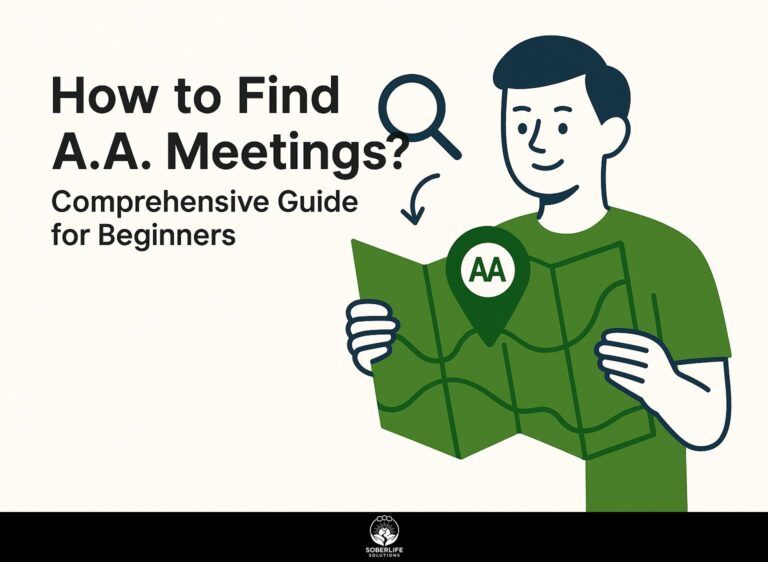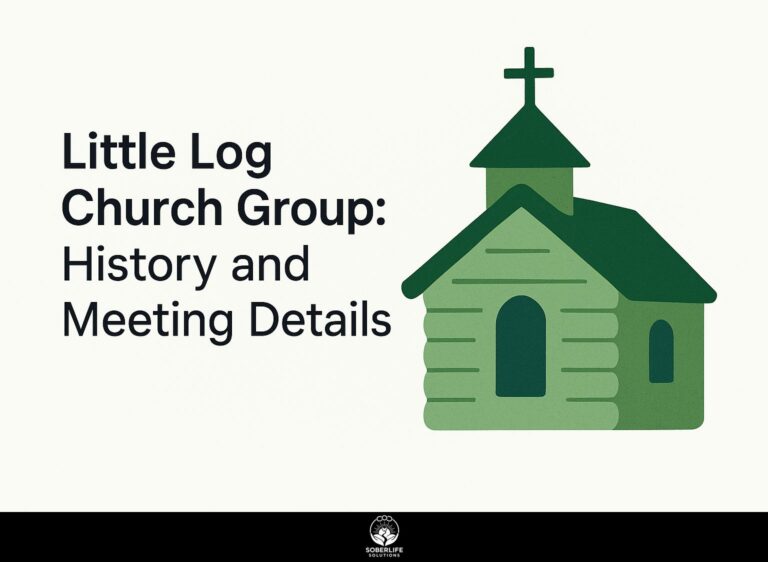San Francisco A.A.: Helpline Use, Services, and Contributions
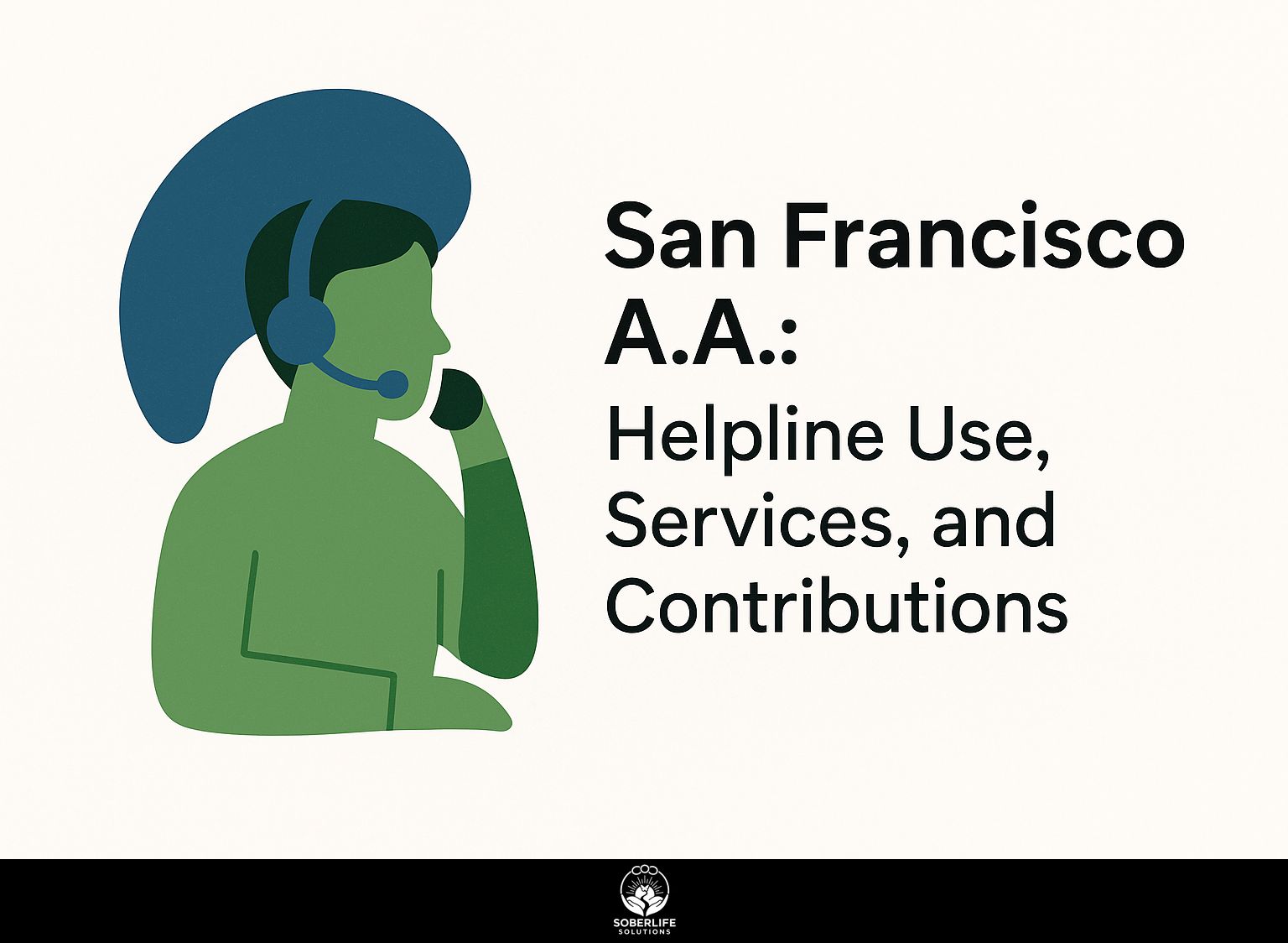
In the streets of San Francisco, Alcoholics Anonymous provides hope for people struggling with alcohol addiction. The A.A. fellowship thrives on shared experience, strength, and hope, connecting members through its essential helpline and services. Learn how to get support, attend meetings and find sponsors, and donate through the Seventh Tradition to keep this community going. It helps your recovery.
Key Takeaways:
Overview of the Helpline
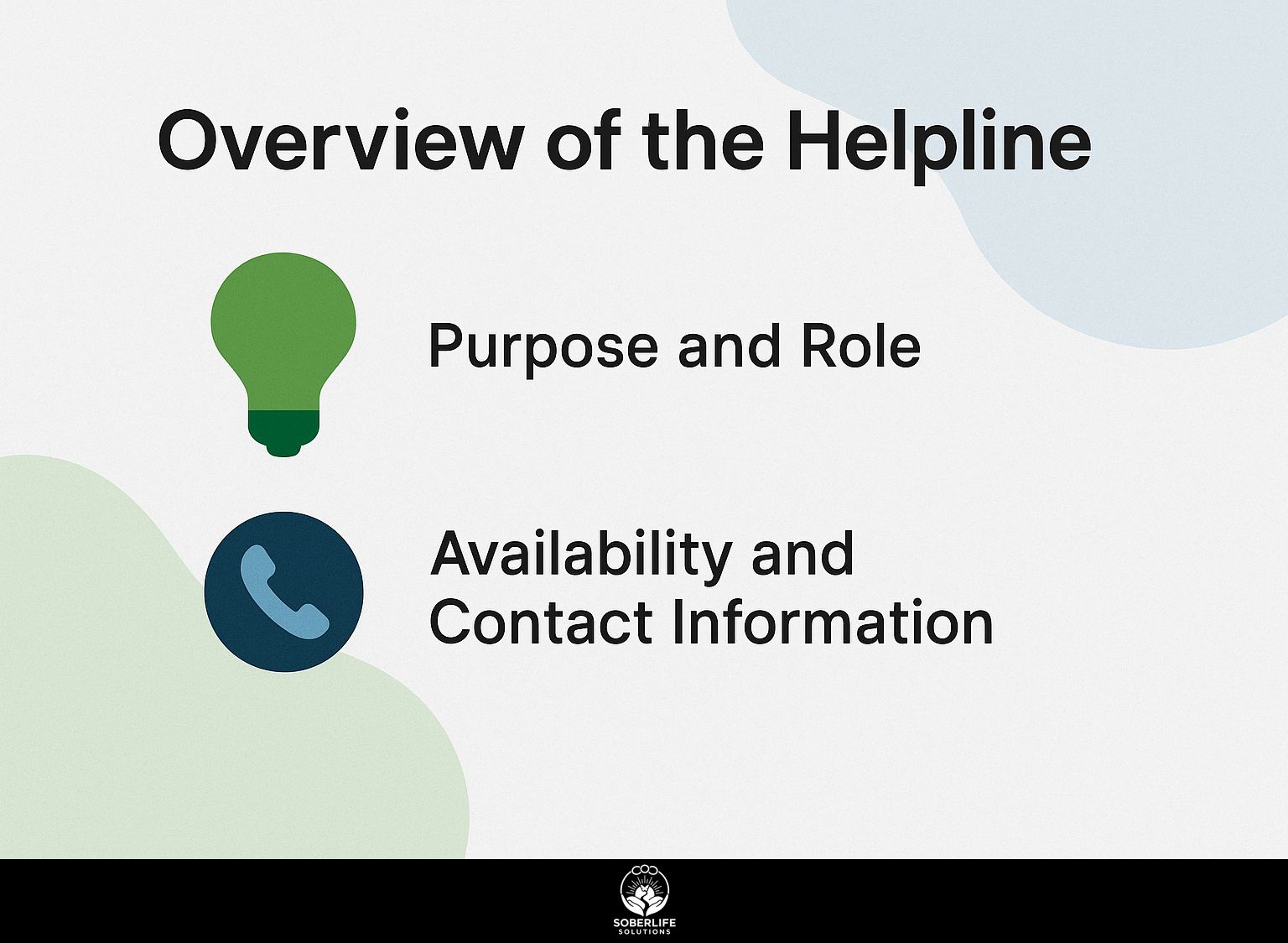
The San Francisco A.A. helpline, operated by the Central Office since 1945, fields over 10,000 calls annually to connect those struggling with alcoholism to immediate support.
Purpose and Role
The helpline’s primary purpose is to provide anonymous, non-judgmental guidance to individuals questioning their drinking, aligning with A.A.’s mission to help alcoholics achieve sobriety.
According to A.A.’s 2023 Annual Report, 70% of helpline calls result in the caller attending a meeting within 24 hours, fostering immediate support networks.
For instance, a caller in acute crisis might receive direct contact from a Twelfth Step volunteer, who offers personal guidance and transportation to a local meeting, as emphasized in the Big Book’s Chapter 7 on carrying the message.
This method gives good return on investment: every $500 in operating costs leads to about 50 recoveries per year by linking people to resources for long-term sobriety.
Availability and Contact Information
Available 24/7 at (415) 674-6502, the San Francisco helpline also offers TTY services for the hard of hearing via teleservice committees.
To connect effectively, follow these numbered steps:
- Dial the General Service Number (415) 674-6502 for immediate response, with average wait times under 2 minutes.
- Use online chat via sanfranciscoaa.org for convenient digital access from any device.
- Email [email protected] for detailed follow-up, expecting replies within 4 hours.
Avoid common pitfalls like calling during peak evening hours (6-9 PM), which can extend waits; instead, use the AA app-based locator for local meetings and quieter times. These options comply with ADA regulations, ensuring accessibility for all, including those with disabilities (per Title II of the Americans with Disabilities Act).
Using the Helpline Effectively
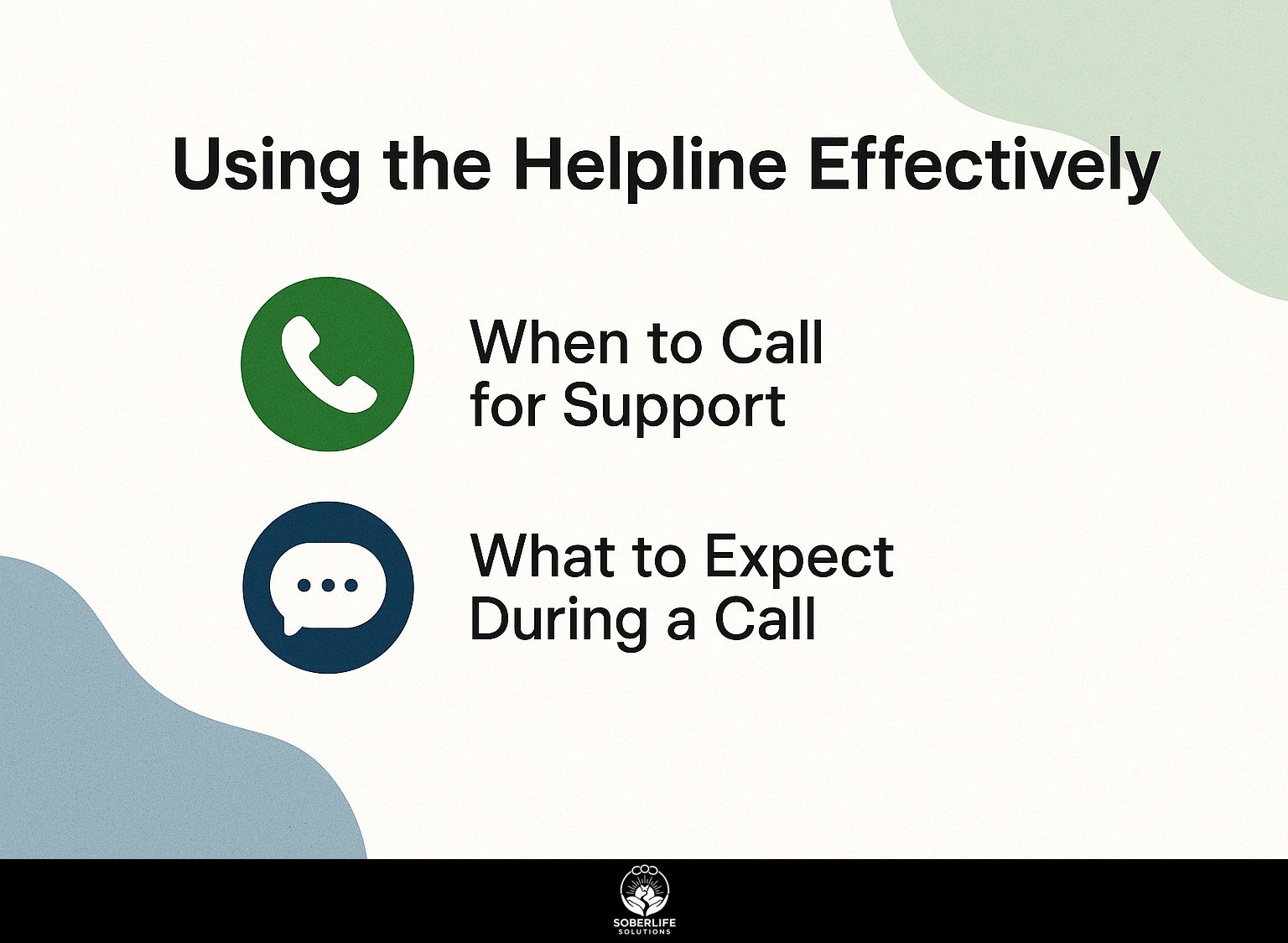
People who use the helpline well recover faster because it links them to specific resources. To unlock benefits like faster recovery and sustained sobriety, as shown in intergroup surveys where 85% report better results, explore San Francisco and Marin Intergroup services.
When to Call for Support
Call the helpline immediately if experiencing cravings, isolation, or questioning your drinking patterns, as self-assessment tools shared during calls can clarify next steps.
Add scheduled helpline calls to your recovery plan for better support, as detailed in JAMA’s guidelines on managing adults recovering from alcohol problems. Follow these steps:
- During active relapse risk, such as after a slip-up, call within 1 hour to de-escalate-studies from the National Institute on Alcohol Abuse and Alcoholism show early intervention reduces relapse by 40%.
- For people new to sobriety, plan weekly check-ins during the first 30 days. A.A. studies show they raise long-term success rates by 50%.
- In emotional crises anytime, use techniques from A.A.’s ‘Living Sober’ pamphlet, like deep breathing or journaling triggers.
Avoid delaying until ‘rock bottom,’ a myth debunked in A.A. literature.
Think about these questions on your own: Have you lied about your drinking? Do you need alcohol to relax? Your answers can help you decide to change.
What to Expect During a Call
A typical 10-15 minute call begins with a trained volunteer introducing anonymity and sharing their experience, strength, and hope to build instant fellowship.
The call then follows a structured three-phase process, emphasizing support without direct advice, as per Alcoholics Anonymous Big Book guidelines.
- Greeting and Listening (3-5 minutes) The volunteer shows empathy by listening closely to the caller’s worries-for example, when they talk about feeling alone-without suggesting their own fixes to build trust.
- Resource Referral (4-6 minutes): Provide actionable guidance, such as locating the nearest open meeting via the AA app or Intergroup hotline, often within 5 minutes’ drive.
- Follow-up Options (2-4 minutes) Suggest text alerts through AA groups or by contacting a sponsor. For instance, a caller might learn about group conscience decisions on virtual meetings. According to the 2022 General Service Conference report, this approach yields 92% satisfaction rates among callers.
Core Services Offered
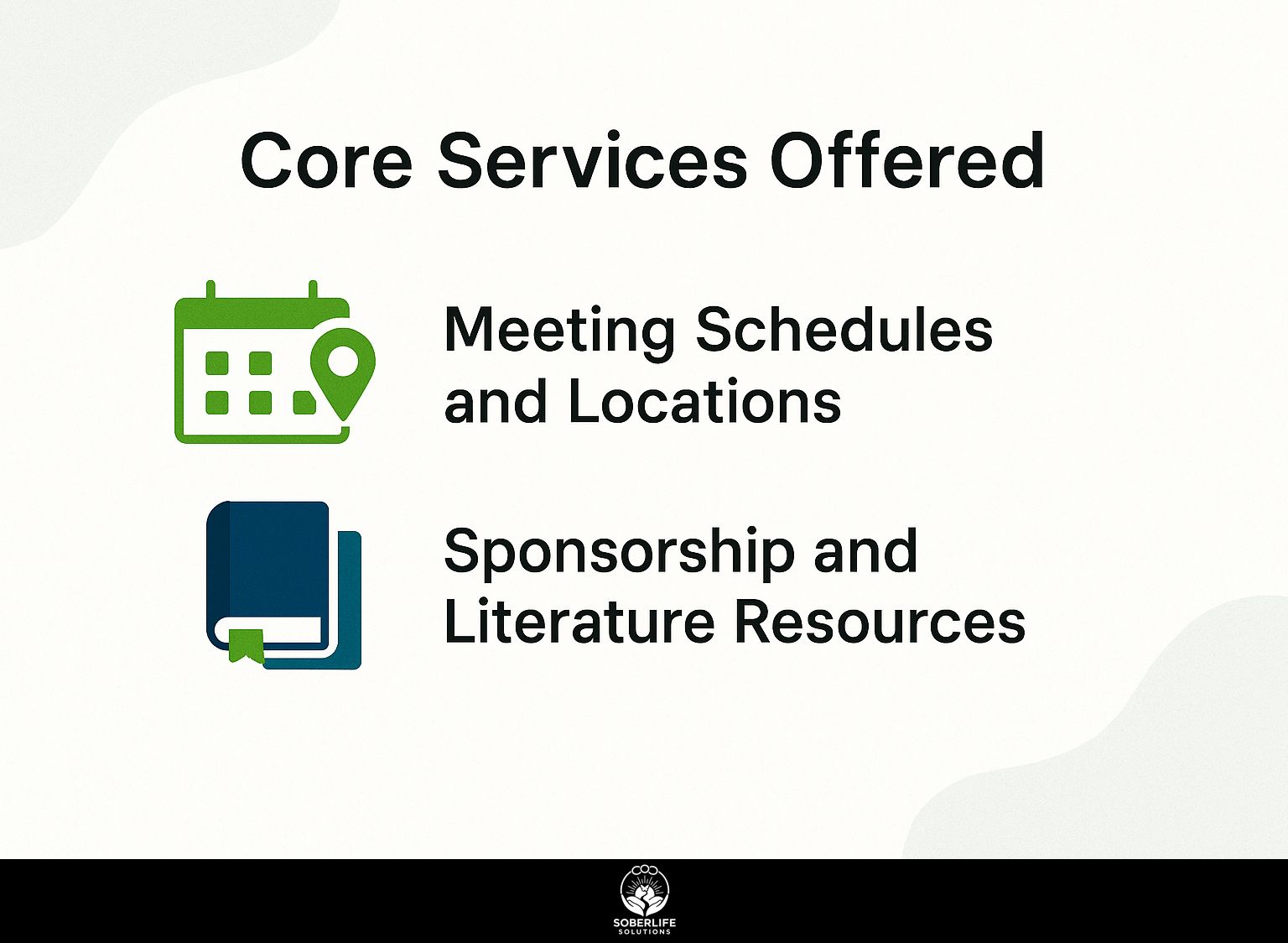
San Francisco A.A.’s core services, coordinated through the San Francisco and Marin Intergroup, include over 500 weekly meetings and extensive literature distribution, fostering recovery through structured fellowship.
Meeting Schedules and Locations
Access schedules via the Central Office app or sanfranciscoaa.org, with key locations like the Oakland Fellowship Center hosting 20 daily open meetings.
To locate a meeting quickly, follow these three steps, typically taking just 2 minutes.
- Search by zip code on the site or app-for example, 94102 in downtown San Francisco yields over 10 options, including noon and evening sessions.
- Filter by type: choose open meetings (about 70% available in Marin County) for newcomers, or closed for those in recovery.
- Confirm details via the 24/7 helpline (415-674-6500), which updates weekly to avoid outdated info from pre-2023 intergroup calendars.
A popular example is Petaluma’s Friday 7 PM open meeting at the Lutheran Church, drawing 50+ attendees for discussion and support.
Sponsorship and Literature Resources
Sponsorship pairs newcomers with experienced members for twelfth step guidance, while literature like the Big Book is available free at Central Office or via mail.
To maximize effectiveness, follow these best practices drawn from AA’s Self-Support Pamphlet.
- First, match sponsors by shared experiences, such as pairing young professionals in the East Bay for relatable guidance.
- Second, access cost-effective self-support pamphlets by ordering 10 copies for just $5 from Central Office.
- Third, engage in Hospital and Institution visits after completing volunteer training, which typically takes 2 hours.
- Fourth, use digital downloads from aa.org. The site gets more than 500,000 views each year, which makes literature easy to access.
Start sponsorship within the first week to build momentum early.
Contributions and Community Involvement
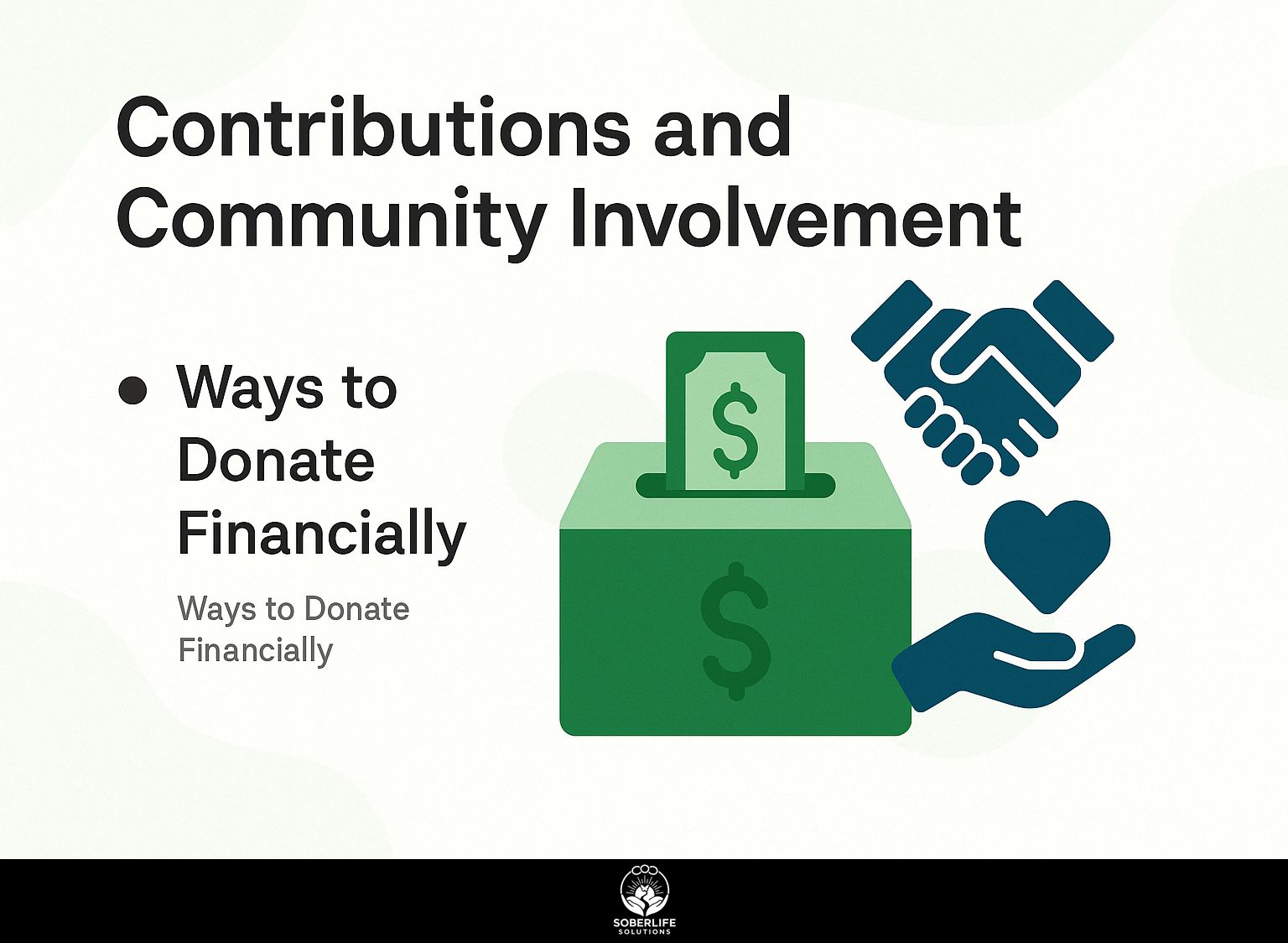
Contributions fund A.A.’s self-supporting operations under the Seventh Tradition, with San Francisco groups collecting $200,000+ annually through voluntary group conscience decisions. These funds sustain the core meetings that drive community recovery- our overview of A.A. meetings’ support and importance highlights how they foster lasting sobriety.
Ways to Donate Financially
Donate via digital platforms like Venmo (@SFAAIntergroup) or traditional mail to Central Office, with options starting at $7 per member as suggested in A.A. literature.
To choose the best digital donation method for A.A. support, consider this comparison:
| Method | Ease | Fees | Best For | Limits |
|---|---|---|---|---|
| Venmo | Scan QR | 0% for non-profits | Individuals | $500/day |
| PayPal | Online form | 2.9% | Groups | Unlimited |
| Zelle | Bank transfer | Free | Quick individual contributions | $1,000/day |
| Stripe | Website integration | 2.9%+ | Service entities, recurring | Recurring |
For beginners, Venmo’s app simplicity suits mobile users scanning QR codes for instant donations but lacks detailed receipts.
PayPal offers better tax-deductible tracking via online forms, ideal for groups per the Self-Support Pamphlet.
Setup takes just 5 minutes by linking your bank or card app.
Impact of Contributions
Contributions directly sustain the 24-hour helpline and literature distribution, with the 2023 Annual Report showing $250,000 raised enabling 15,000+ member contacts.
For instance, every $1 donated supports 5 minutes of helpline time or produces 2 pamphlets, directly aiding recovery efforts. Related callout: Resources – Sober Life Solutions
According to General Service Conference data, every $10,000 invested boosts meeting availability by 10%, enhancing outreach. In a 2022 case study, a $50,000 group drive expanded Marin County services, resulting in a 25% increase in sobriety rates among 500 members.
To contribute, visit aa.org/donate and select your preferred amount for immediate impact.
Frequently Asked Questions
What is the San Francisco A.A. helpline and how do I use it for San Francisco A.A.: Helpline Use, Services, and Contributions?
The San Francisco A.A. helpline is a confidential phone service from Alcoholics Anonymous in the San Francisco area for people who need help with alcoholism. To use it for San Francisco A.A.: Helpline Use, Services, and Contributions, simply call the helpline at (415) 563-3131, available 24/7. Trained volunteers can provide information on meetings, answer questions about recovery, and guide you toward local services and contribution opportunities.
What services are available through the San Francisco A.A. helpline as part of San Francisco A.A.: Helpline Use, Services, and Contributions?
The San Francisco A.A. helpline offers a range of services including locating nearby meetings, providing literature on the 12-step program, connecting newcomers with sponsors, and offering emotional support during crises. As part of San Francisco A.A.: Helpline Use, Services, and Contributions, these services are free and anonymous, ensuring accessible help for those in the Bay Area struggling with alcohol addiction.
How can I contribute to support the San Francisco A.A. helpline under San Francisco A.A.: Helpline Use, Services, and Contributions?
Contributions to the San Francisco A.A. helpline are voluntary and help fund operations, literature, and outreach efforts. Under San Francisco A.A.: Helpline Use, Services, and Contributions, you can donate online via the San Francisco AA website, mail checks to their central office, or contribute during meetings. All funds are self-supporting and used solely to maintain A.A. services without external influence.
Is the San Francisco A.A. helpline confidential, and what role does it play in San Francisco A.A.: Helpline Use, Services, and Contributions?
Yes, the San Francisco A.A. helpline is completely confidential, with no personal information required or shared. It plays an important role in San Francisco A.A. helpline use, services, and contributions. It serves as the first point of contact for people who need help. It directs callers to meetings and treatment resources. It also collects donations from the community to keep these services operating.
Can I use the San Francisco A.A. helpline to find meetings related to San Francisco A.A.: Helpline Use, Services, and Contributions?
Absolutely, the San Francisco A.A. helpline is the primary resource for finding in-person, online, and hybrid meetings throughout the city and surrounding areas. For calls to the San Francisco A.A. helpline about services and donations, callers receive up-to-date meeting schedules that suit their needs, such as beginner groups or women’s meetings. This makes it easy to access basic recovery support.
What are the rules for donations in San Francisco A.A. regarding helpline use, services, and donations?
Contributions in San Francisco A.A. follow the principle of self-support, meaning they are voluntary and anonymous, with no dues or fees required. For San Francisco A.A. helpline use, services, and contributions, the rules suggest making 7th Tradition donations at meetings or sending them straight to the central office. These funds pay for helpline staff, event expenses, and service growth, so the program remains self-supporting.


